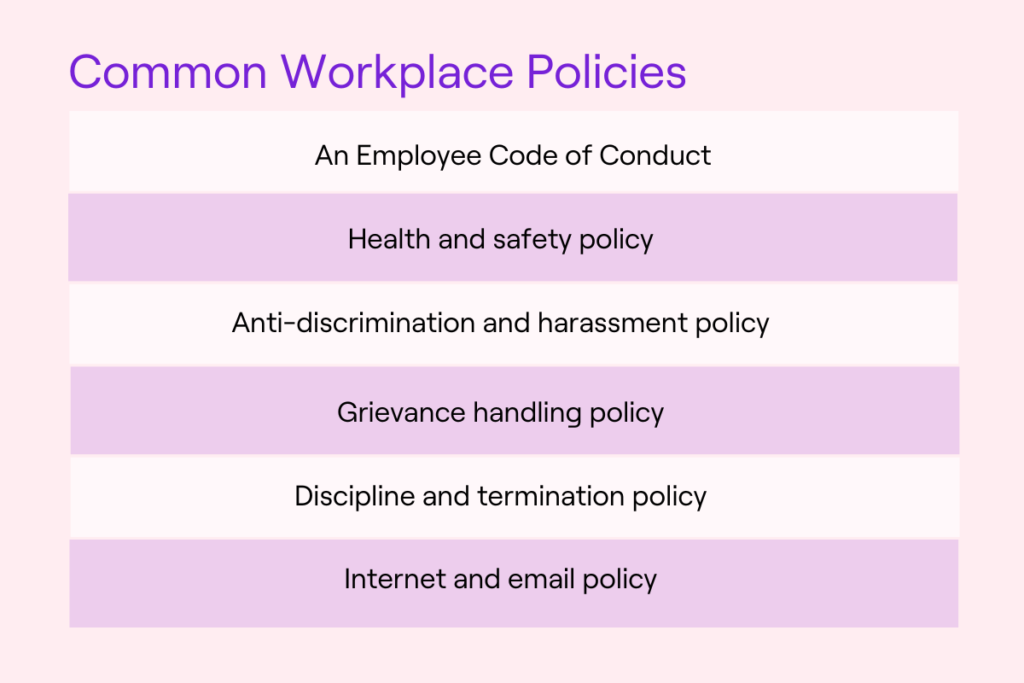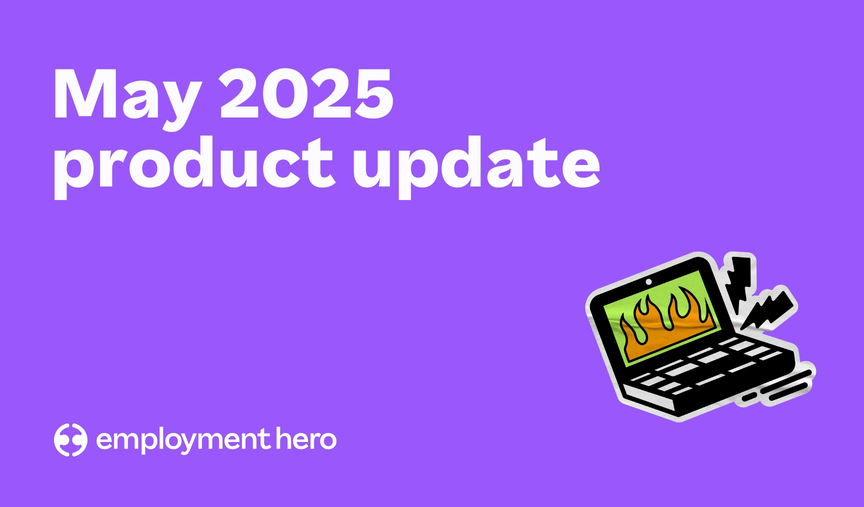What is an Employment Contract? [Singapore Guide]
Employment contracts help define an employment relationship and allow both the employer and employee to get on the same page.

Congratulations! If you’re reading this blog you must be on the verge of hiring your first staff member and writing your own employment contract. Building a team is an exciting step in growing your business so here’s to you!
On the flip side, it can also be a little scary. For instance, there are all the legalities to consider.
Employment shouldn’t be stressful! We want to help you navigate the complexities of hiring. Let’s start with the first formal document you’ll need to draw up; the employment contract.
What are employment contracts?
Let’s first answer the question; what is an employment contract?
An employment contract is a legally binding document between employer and employee that lays out the agreed terms and conditions and employment agreements that each party will abide by for the duration of the employment term.
The employment contract is designed to protect you (the employer) and your new employee, ensuring there is no confusion on requirements or remuneration for the job that needs to be completed.
Time to sign on the dotted line. Photo by Green Chameleon on Unsplash
Is a written employment agreement required in Singapore?
In general, Singapore follows a ‘freedom-of-contract’ approach. Both employers and employees are free to include whatever terms they wish in a contract, provided that these terms are not illegal. They should however, be compliant with the requirements outlined by the Employment Act if the employee is covered by it.

Under the Act, as an employer you must have a written contract of service that defines the employer-employee relationship, including the terms and conditions of employment.
What does at-will employment mean?
Have you heard the term “at will employment” floating around? Maybe you’re wondering if you need to write up “at will employment contracts”? This is a term and concept used in the United States which refers to an employer’s ability to terminate an employee’s employment at any time, with any justification.
This is generally not observed in Singapore, where employers must have a just cause for ending employment, and must do so with a written letter.
Learn more about the compliant termination of employment on the Ministry of Manpower’s website.
How should employment contracts be written?
Employment contracts written in plain English help you minimise costly and time-consuming disputes or legal issues by providing certainty about the legal rights and obligations of both you and your staff.
Although you might work with an employment lawyer to help you write an employment contract, the contract itself should ultimately be easy to read and understand.

Employment contracts are generally issued at the same time as an offer letter.
What type of employment contract do I need?
Just like your employees, every employment contract is unique; a standard employment contract simply doesn’t exist.
This probably isn’t what you want to hear as a busy business owner (sorry!) but tailoring your contract of employment to each new hire is best practice. It’s all about ensuring terms are clear and understood, and risk is minimised for both parties in the employment relationship.
Although every written agreement will be tailored to your new team member, there are also two types of written contracts to be aware of in Singapore; a contract of service and a contract for service.
Whether you’re an employer or a human resource manager, knowing the differences between these two types of employment contracts is important, when it comes to legal liability as an employer or service-buyer. Errant companies who have misclassified their workers will be subject to warnings and late payment fees amongst other things.
As defined by the Ministry of Manpower, a contract of service is an agreement between an employer and an employee; whereas a contract for service refers to an independent contractor, such as a self-employed person or vendor, who is engaged for a fee to carry out an assignment or project.
Contract of service
A contract of service generally;
- Has an employer-employee relationship
- Employee does business for the employer
- May be covered by the Employment Act (depending on eligibility)
- Includes terms of employment such as working hours, leave benefits, etc
- Employers usually provide the employee with the necessary tools, equipment, and work gear.
- Employers must maintain employee records such as employees’ employment contracts, wages, timesheets, and holidays and leave records.
- Employers are obliged to contribute to employees’ CPF accounts
Contract for service
Alternatively, a contract for service will generally;
- Has a client-contractor type of relationship
- Contractors carry out business on their own account
- Not covered by the Employment Act
- Statutory benefits do not apply
- Contractors spend their money buying all necessary work equipment and tools, and other assets. They also incur running costs.
- Contractors manage their own documents
- Contractors manage their own CPF contributions

Your contract type will depend on whether you’re hiring an employee or working with a self employed person.
When working with self-employed people (SEPs)…
Businesses should follow the Tripartite Standard on Contracting with Self-Employed Persons (SEPs) when writing and documenting a contract for service with SEPs, to ensure clarity in the expectations and conduct of the relationship. This will also come in handy should there be any payment disputes that arise.
What to include in an employment contract
Let’s get more specific about what is required in employee contracts of service and how you can create a written employment contracts outline.
Written employment contracts must include key employment terms (KETs) and essential clauses, such as:
- Full name of employer and employee;
- Job title, main duties and responsibilities;
- Commencement date of employment;
- Duration of employment (if employee is on fixed term contract);
- Working arrangements such as daily hours of work, number of working days per week, rest days;
- Remuneration (salary period, basic salary or basic rate of pay for those paid by hour, day, or by piece);
- Fixed allowances/deductions;
- Overtime payment period and overtime rate of pay;
- Bonuses and incentives;
- Type of leave (annual leave, sick leave, hospitalisation leave, maternity leave, childcare leave);
- Insurance, medical benefits and dental benefits;
- Probation period (if any);
- Termination of contract, notice period; and
- Place of work (optional).
Employers are required to keep a copy of each team member’s employment agreement.

Every employment agreement is different
A written employment contract is a legally binding document that lays everything out on the table; terms, expectations on employee’s performance, contingency plans and more.
It’s designed to protect your employee but also you and your business, so it’s worth putting in the time to get it right. It’s a key part of building a trusting and transparent employment relationship.
Make use of resources like the Ministry of Manpower to better understand the inclusions set out by the government, differences between contract types and ideas on clauses that may be relevant to you.
Also, don’t hesitate to consult an employment lawyer if you’re not sure how to put together your written contract. Getting some advice for your specific situation can help you create the most accurate document, and give you a great knowledge base for the future.
If you’re considering hiring overseas, these hiring guides will help you understand how employment law differs across different countries.

The benefits of using digital contracts
Everything’s going digital these days, and employment contracts are following suit!
But what are the benefits of using an electronic employment contract over a classic paper version? Well, they simply make life a whole lot easier for you and your employees. Here’s how.
1. They save everyone time
With traditional paper contracts, you have to create the document, print it, and send it out via snail mail. Alternatively, you might send a copy via email – which will require your new hire to print it out and send it back to you (and who has a home printer these days?).
With digital contracts, you’ll simply flick it over to your new employee via the cloud. They can receive it, make a digital signature and have it back to you within minutes.
2. They streamline the offer process
Every hiring manager will know that recruitment is a race! The faster that you secure that person, the more you reduce the risk of having them be snapped up by another company.
When you’re working digitally, you streamline the whole offer process. It’s not only faster, but it’s also simpler. It can help you get your new recruit confirmed and excited to get started.
Looking for a way to simplify your hiring process? Go digital and save time with our ATS software.
3. They are easily accessible
Are you heading into a performance review and need to quickly review details of someone’s employment? Maybe your employee wants to double-check their work details at tax time?
These are tasks that, before electronic contracts, could have held you up for an hour (or more!). Instead, you can access your digital files securely and in seconds on the cloud.
Using electronic employment contracts can help you ditch tedious filing tasks. Search for an employee’s contract in seconds and say bye-bye to filing cabinets for good.
4. They reflect well on your business and HR team
Digital contracts are just one of the recruitment tools that your HR teams can use to provide a great recruitment experience.
Instantly receiving a digital contract after they accept an offer can help build a new team member’s confidence in your business. It shows that your business and HR team are efficient, tech-savvy and helpful.

See four more reasons why you should make the switch to digital employment contracts.
Other essential parts of the onboarding process
When you issue your employment contract, it’s also best practice to include some other essential onboarding information.
Workplace policies
Every business needs to have clear and easy to understand workplace policies and procedures in place.
They protect your business from a range of situations, whether it’s social media, inappropriate computer use, discrimination or harassment. Policies are key to developing your business through your people and protecting it against financial risks.
A policy is only effective if properly communicated and uniformly enforced to all employees. This means you need to explain the policy and provide training if necessary to ensure your employees understand how to comply with the policy and the consequences if they breach it.
Make sure employees sign off on a document acknowledging that they are aware of the policy and understand it completely.
Did you know that Employment Hero has a library of HR policy templates written by employment experts on our platform? Learn more about how our HR tools can help you streamline hiring.
Employee handbook
If you have one, distribute your employee handbook to your new team member early in the onboarding process.
An employee handbook will likely not cover the formal information that has been covered in the employment contract. Rather, think of it as a friendly introduction to your business.
Common elements of an employee handbook
What your employee handbook includes is up to you, but here are some helpful additions that will help your team member get started;
- A brief history of the business
- Information about your company’s mission and values
- An overview of your business goals
- An introduction to the senior leaders of the team
- An organisational chart to better understand who’s who
- Any details on your company culture (when does the team come together, what do they do to celebrate their achievements)
- A training manual (if required)

Job description or list of duties
A job description or position description (JD or PD) should be a comprehensive document that gives your employee a deeper understanding of their role.
While a job description or list of duties is generally provided at the recruitment stage, it’s always a good idea to reissue these on commencement of employment. Providing this kind of document can help your new employee prepare for their role, and can give them a reference to return to throughout their employment.
Creating your best job description

Not sure how to create a comprehensive job description? Our free job description template can help.
Employment Hero can help!
Did you know that Employment Hero has an easy Paperless Onboarding feature? This feature can support you in quickly putting together a fully compliant digital employment contract that can be signed electronically.

If having a new hire fully onboarded in a couple of minutes prior to their start date sounds like a dream to you, get in touch with one of our small business specialists today.
Download our free payroll guide
If you need help staying compliant when it comes to payroll, download our free Singapore Payroll Guide now.
Disclaimer: The information in this article is current as at 28 May 2022, and has been prepared by Employment Hero Pty Ltd (ABN 11 160 047 709) and its related bodies corporate (Employment Hero). The views expressed in this article are general information only, are provided in good faith to assist employers and their employees, and should not be relied on as professional advice. The Information is based on data supplied by third parties. While such data is believed to be accurate, it has not been independently verified and no warranties are given that it is complete, accurate, up to date or fit for the purpose for which it is required. Employment Hero does not accept responsibility for any inaccuracy in such data and is not liable for any loss or damages arising either directly or indirectly as a result of reliance on, use of or inability to use any information provided in this article.You should undertake your own research and to seek professional advice before making any decisions or relying on the information in this article.
Related Resources
-
 Read more: Product Update: May 2025
Read more: Product Update: May 2025Product Update: May 2025
Follow our May 2025 product update as we share all of the latest and greatest features we’ve released over the…
-
 Read more: Product Update: April 2025
Read more: Product Update: April 2025Product Update: April 2025
Follow our April 2025 product update as we share all of the latest and greatest features we’ve released over the…
-
 Read more: Product Update: March 2025
Read more: Product Update: March 2025Product Update: March 2025
Follow our March 2025 product update as we share all of the latest and greatest features we’ve released over the…









